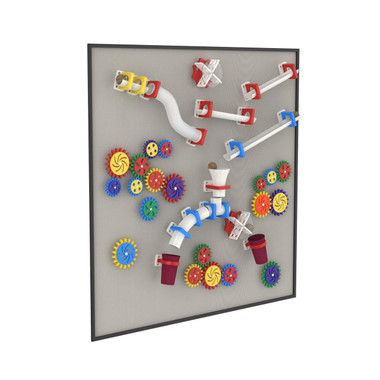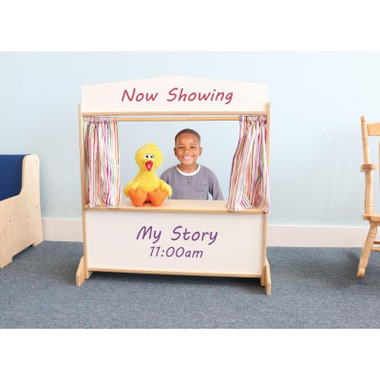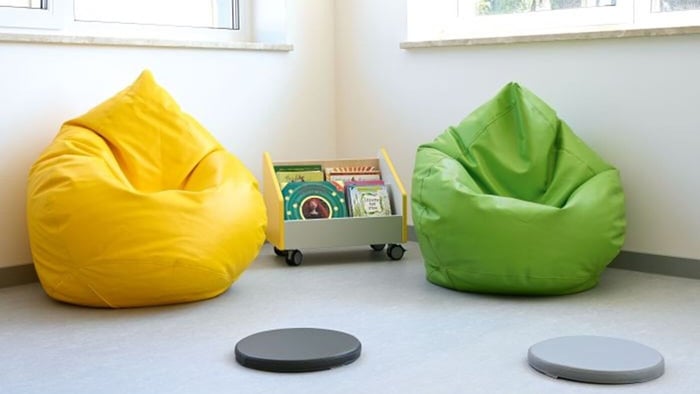
The Toy Takeover: How Play Is Reshaping Modern Libraries
Table of Contents
- Libraries are quietly transforming into play centers, but it's not because books are failing—it's because they've discovered play builds critical thinking skills that reading alone cannot. The reason might change how you view your child's learning needs.
- Key Takeaways
- Libraries Are Secretly Transforming Into Play Centers
- Why Your Child's Development Needs More Than Books
- The Hidden Costs Toy Libraries Are Solving
- How Play Actually Increases Book Reading
- Finding Inclusive Play Spaces for Every Child
- Your Local Library Is Becoming Your Child's Best Learning Partner
- FAQs
Libraries are quietly transforming into play centers, but it's not because books are failing—it's because they've discovered play builds critical thinking skills that reading alone cannot. The reason might change how you view your child's learning needs.
Key Takeaways
- Libraries are transforming into play centers because play-based learning builds critical executive function skills and enhances children's cognitive development more effectively than structured activities alone.
- Quality educational toys cost families hundreds of dollars annually, while toy libraries provide free access to diverse, adaptive toys that many families couldn't otherwise afford.
- Gaming and play programs draw more families into library services, creating entry points for broader library engagement.
- Specially-adapted toys at libraries create inclusive spaces for children with disabilities, breaking down financial barriers that can cost 2-3 times more than regular toys.
Libraries Are Secretly Transforming Into Play Centers
Walk into many modern libraries today and the scene might surprise parents expecting rows of quiet book stacks. Instead, children cluster around building blocks, manipulate colorful STEM kits, and engage in dramatic play with props and puppets. This isn't a deviation from libraries' educational mission—it's an evolution that recognizes play as one of the most powerful learning tools available to young minds.
The transformation began during the Great Depression when the first toy library opened in Los Angeles in 1935. A dime store manager noticed children shoplifting thread spools to use as toy car wheels, prompting school principal Gertrude Peddie to establish "Toy Loan" in a local garage. What started as a response to economic hardship has blossomed into a sophisticated understanding of how children learn best.
Today's toy libraries function similarly to traditional book lending but focus on non-digital, imagination-fostering toys that encourage creativity and social interaction. Little People's Cove represents this movement toward recognizing play as fundamental to early childhood development. These spaces bring together families from diverse backgrounds while providing access to quality educational materials that support every child's growth.
Why Your Child's Development Needs More Than Books
Recent research reveals that children who engage in more free play develop stronger self-directed executive function than those who spend most time in adult-led structured activities. Executive function includes the ability to generate personal goals and determine practical steps to achieve them—skills that directly impact a child's ability to complete homework independently, manage emotions, and adapt to new situations.
Play-Based Learning Builds Critical Executive Function
The University of Colorado studied 70 six-year-olds and found that those with more unstructured play time showed significantly higher levels of self-directed executive function. This "flexibility hypothesis" suggests that play-fighting children who alternate between dominant and submissive roles develop mental suppleness that helps them adapt to sudden life changes later.
Children with high playfulness levels—those who are spontaneous, outgoing, creative, and lighthearted—demonstrate better stress-coping abilities throughout life. This emotional resilience becomes a foundation for academic success and healthy relationships.
STEM Toys Create Future Problem-Solvers
Libraries increasingly offer STEM kits containing robotics components, circuitry tools, and engineering challenges that children can take home. These hands-on experiments promote positive learning habits by allowing kids to test theories, experience failure safely, and iterate solutions.
Unlike passive screen time, physical manipulation of STEM toys engages multiple senses simultaneously. Children build spatial reasoning skills while constructing circuits, develop mathematical concepts through building challenges, and strengthen scientific thinking through experimentation and observation.
MagWiz Magnetic Hybrid STEM Gears & Wall Ball Run Activity

$5,104.00
Transform your walls into a creative playground with MagWiz Magnetic Wall Ball Run - Hybrid! This interactive magnet wall opens up endless opportunities for play...… read more
Social Play Develops Essential Life Skills
Group play experiences teach children negotiation, compromise, and collaboration in ways that individual activities cannot replicate. When children work together to build structures, create stories, or solve puzzles, they practice communication skills and learn to consider multiple perspectives.
These social interactions become particularly valuable for children from diverse backgrounds, creating natural opportunities for cultural exchange and empathy development. Libraries serve as neutral spaces where economic and social barriers dissolve through shared play experiences.
The Hidden Costs Toy Libraries Are Solving
The financial reality facing many families creates significant barriers to accessing quality educational toys that support optimal development. These economic challenges particularly impact children with special needs, who require specialized adaptive equipment to participate fully in play-based learning.
Quality Educational Toys Remain Out of Reach for Many Families
Many American families struggle to afford high-quality educational materials that promote optimal development. Premium building sets, science kits, and manipulative toys often cost hundreds of dollars, placing them beyond reach for families already stretched by childcare and housing expenses.
Toy libraries eliminate this financial barrier by providing access to diverse, rotating collections of educational materials. Families can borrow expensive items for weeks at a time, allowing children to engage deeply with learning tools they wouldn't otherwise encounter. Some libraries offer affordable subscription models, such as $45 family memberships that provide unlimited access to extensive toy collections.
Adaptive Toys Create Financial Barriers for Special Needs Children
Adaptive toys designed for children with disabilities often cost two to three times more than standard versions, creating prohibitive expenses for families already managing therapy and medical costs. Organizations like FairPlay build international lending systems specifically for adaptive toys, ensuring children with disabilities can access the same play benefits as their peers.
These specially-adapted toys aren't luxury items—they're tools for skill development, social inclusion, and emotional well-being. Library-based adaptive toy programs level the playing field, providing free access to resources that support every child's right to play and learn.
How Play Actually Increases Book Reading
Contrary to concerns that toys might distract from reading, libraries report that gaming and play programs actually draw more families into library services. The Houston Public Library found that offering game consoles and iPads resulted in increased book lending, while struggling readers engaged with text up to eight grades above their typical reading level when presented in gaming formats.
Story Props and Dramatic Play Enhance Literacy Skills
Interactive storytelling sessions that incorporate puppets, props, and dramatic play elements create multi-sensory reading experiences that deepen understanding and vocabulary development. Children who act out stories demonstrate better retention of narrative structure, character development, and plot progression than those who experience books passively.
Sensory story boxes filled with textures and objects related to book themes help children connect physical experiences with abstract concepts. Letter-building activities using blocks and manipulatives reinforce phonemic awareness through tactile learning, supporting reading readiness in ways that worksheets cannot match.
Deluxe Puppet Theater With Markerboard

$359.52
Our popular Deluxe Puppet Theater With Markerboard lets a child's imagination take center stage. The colorful curtains frame a sturdy, stable stage and the dry erase...… read more
Gaming Programs Draw More Families Into Library Use
Gaming programs attract teenagers and families who might not otherwise visit libraries regularly, creating entry points for broader library engagement. These programs establish libraries as "third places"—comfortable spaces between home and school where learning happens naturally through play and social interaction.
Lower-income youth gain access to games they couldn't afford otherwise, while all participants learn that libraries welcome diverse interests and learning styles. This inclusivity builds positive associations with library spaces that extend into adulthood, creating lifelong learners and library supporters.
Finding Inclusive Play Spaces for Every Child
Modern toy libraries prioritize accessibility and inclusion, ensuring that children with varying abilities, backgrounds, and learning needs can participate meaningfully in play-based learning experiences. These efforts address systemic barriers that have historically limited access to quality educational play opportunities.
Specially-Adapted Toys Open Play to Children with Disabilities
Adaptive toys serve as tools for children with disabilities, providing modified switches, enhanced sensory features, and alternative input methods that make play accessible. These modifications aren't afterthoughts—they're carefully designed accommodations that ensure every child can experience the joy and learning that come from play.
Library-based adaptive toy programs eliminate the financial barriers that often prevent families from accessing these resources. By providing free lending of specialized equipment, libraries ensure that disability doesn't limit a child's opportunities for skill development, social interaction, and creative expression.
Community Play Spaces Bring Diverse Families Together
Toy libraries create informal community spaces where families from different economic, cultural, and social backgrounds interact naturally through shared play experiences. These interactions break down barriers and build understanding in ways that formal programs often cannot achieve.
Parents observe different play styles, learning approaches, and family dynamics, gaining valuable insights that inform their own parenting practices. Children experience diversity as natural and normal, developing inclusive attitudes that benefit society broadly.
Volunteer Opportunities Strengthen Parent Networks
Many toy libraries rely on parent volunteers for toy maintenance, program support, and community outreach. These volunteer roles provide parents with meaningful ways to contribute while building social connections and expanding their support networks.
Parents develop new skills, gain confidence in educational advocacy, and form lasting friendships through shared commitment to children's learning. These connections often extend beyond library walls, creating community bonds that support families through various challenges and celebrations.
Your Local Library Is Becoming Your Child's Best Learning Partner
The evolution of libraries into play-based learning centers reflects a deeper understanding of how children develop and thrive. By adding toys, games, and hands-on activities alongside traditional books, libraries position themselves as educational partners that support the whole child.
This transformation doesn't diminish the importance of reading—it strengthens literacy by recognizing that learning happens through multiple pathways. Children who feel welcomed and engaged in library spaces become more likely to pick up books, participate in programs, and develop positive associations with learning that last throughout their lives.
Libraries that integrate play recognize parents as partners in education, providing resources, guidance, and community connections that support family learning goals. This collaborative approach acknowledges that children's development benefits from rich, varied experiences that extend far beyond formal academic instruction.
The circular economy aspects of toy lending also teach children about sustainability, sharing, and community responsibility. By borrowing rather than buying, families model environmental consciousness while accessing diverse learning opportunities that might otherwise remain out of reach.
As libraries continue evolving to meet community needs, the integration of play-based learning demonstrates their commitment to serving every child's educational journey. These spaces prove that learning and joy aren't mutually exclusive—they're complementary forces that create the optimal conditions for childhood development and lifelong learning success.
Learn how Little People's Cove supports early childhood development through thoughtfully curated play experiences and educational resources.
FAQs
What kinds of toys are most popular or recommended for library play areas?
The most popular and recommended toys for library play areas tend to be open-ended, durable, and engaging toys that encourage creativity, problem-solving, and pretend play. Examples include magnetic tiles (such as Magna-Tiles or Picasso Tiles), toy kitchens and pretend play stations, train tables, plastic animals and dinosaurs, and dress-up boxes or puppet stations. These toys appeal to a wide range of ages and interests, promoting imaginative and constructive play. Other favored items are large soft blocks, puzzles, shape sorters, and interactive kits like STEM toys that include coding robots or magnetic walls. These toys are also chosen for their durability and ease of cleaning, essential in shared public spaces such as libraries. Rotating toys periodically helps with sanitation and keeps children interested.
Is having toys in the library distracting or disruptive to traditional library activities?
Having toys in the library can sometimes be distracting or disruptive if not managed thoughtfully, but when toys are rotated and carefully selected, the overall impact tends to be positive for children's engagement and learning. Studies show that too many toys or those that are noisy and visually stimulating can create distractions, both for children playing and for others nearby, reducing the quality and duration of play as well as the reading-focused atmosphere for traditional library activities. However, offering a smaller, intentional selection of open-ended toys encourages more creative and sustained play and is less likely to overwhelm or disrupt. Libraries that balance play spaces and toy selection effectively often report that toys enhance intentional engagement, socialization, and learning without significant disruption to reading or quiet activities.
How can libraries balance play areas with quiet study zones?
Libraries can balance play areas with quiet study zones by implementing clear zoning strategies that designate specific areas for active play and others for silent or quiet study. Using physical barriers such as movable dividers, acoustic panels, and sound-absorbing furniture helps contain noise within play zones and prevents it from disturbing quiet study areas. Libraries often place play areas strategically away from high-traffic or silent zones to minimize sound bleed. Features like color-coded zones with clear signage guide users to the appropriate spaces for their activities. Flexible layouts that allow for reconfiguration based on demand, such as exam seasons or workshops, also help maintain the balance. Creating enclosed or semi-enclosed play pods and family-friendly rooms with noise containment supports active engagement without disrupting focused workspaces. Regular assessment of space usage and user feedback further helps libraries refine the balance between collaborative play and quiet study needs effectively.



